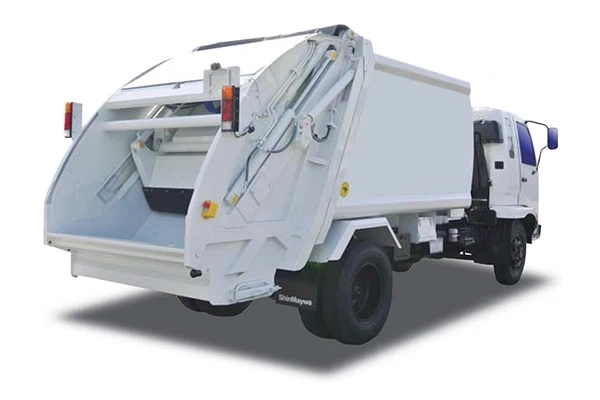Introduction
In a world grappling with environmental challenges, effective waste management is crucial. Garbage compactors have emerged as innovative solutions to optimize waste disposal processes. From reducing landfill volumes to improving hygiene and reducing carbon footprint, these machines are becoming essential tools for both residential and commercial settings. In this blog, we delve into the world of garbage compactors, exploring their types, uses, features, and the multitude of benefits they bring to the table.
Types of Garbage Compactors
Stationary Compactors: These compactors are installed at a fixed location, often used in commercial settings such as restaurants, retail stores, and industrial complexes. They compress waste into a compact unit that is then hauled away for disposal.
Self-Contained Compactors: These compactors have an integrated waste container. They are suitable for locations with limited space and manage both wet and dry waste efficiently. Self-contained compactors are commonly found in hospitals, hotels, and apartment complexes.
Vertical Compactors: Vertical compactors are designed for locations with restricted space. They are particularly suitable for businesses that generate a moderate amount of waste. These compactors compress waste vertically, saving horizontal space.
Horizontal Compactors: These compactors are ideal for high-volume waste generation. They are commonly used in manufacturing facilities, distribution centers, and waste collection points. Waste is loaded from the top and compacted horizontally.
Pre-Crushers: Pre-crushers are heavy-duty compactors that are used to break down large items or bulky waste before they are compacted. This type of compactor is often used in industries that generate oversized waste materials.
Uses of Garbage Compactors
Waste Volume Reduction: One of the primary purposes of garbage compactors is to reduce the volume of waste. By compressing waste materials, they minimize the space required for storage and transport, leading to significant cost savings.
Improved Hygiene: Garbage compactors effectively contain waste, minimizing exposure to rodents, pests, and unpleasant odors. This feature is especially crucial in settings like restaurants, where maintaining a clean environment is vital.
Reduced Transportation Costs: Compact waste occupies less space, leading to reduced transportation costs. Fewer trips are required to haul away waste, thereby lowering fuel consumption and carbon emissions.
Enhanced Aesthetics: Garbage compactors help maintain a tidy appearance in public spaces and commercial establishments. The streamlined waste disposal process eliminates the sight of overflowing bins and scattered waste.
Features of Modern Garbage Compactors
Advanced Compaction Mechanisms: Modern compactors incorporate advanced hydraulic systems and mechanical components to ensure efficient and powerful waste compaction.
Safety Features: Safety mechanisms like emergency stop buttons, interlocks, and overload sensors prevent accidents during the waste compaction process.
Smart Technology Integration: Some compactors are equipped with sensors and monitoring systems that provide real-time data on fill levels, helping optimize waste collection schedules.
Durable Construction: Given the demanding nature of waste management, garbage compactors are built to withstand heavy usage and harsh environments.
Benefits of Garbage Compactors
Environmental Impact: Compacting waste reduces the need for landfills, conserving valuable land and decreasing methane emissions. It also encourages recycling and responsible waste disposal.
Cost Savings: By reducing waste volume, businesses can lower waste disposal costs and save on transportation expenses.
Time Efficiency: Garbage compactors streamline waste management processes, minimizing the time and effort required for waste handling.
Health and Safety: Improved waste containment and reduced exposure to waste materials contribute to a healthier and safer environment for workers and the public.
Sustainability and Image: Using garbage compactors showcases a commitment to sustainability, enhancing the image of both individuals and businesses.
Conclusion
Garbage compactors have evolved into indispensable tools for waste management, catering to a wide range of industries and settings. From their ability to reduce waste volume and carbon footprint to improving hygiene and lowering costs, the benefits they offer are substantial. As technology continues to advance, we can expect even more efficient and innovative garbage compactor solutions to emerge, further revolutionizing waste management practices and contributing to a cleaner, greener future.


